|
Maori songs - Kiwi
songs - Home
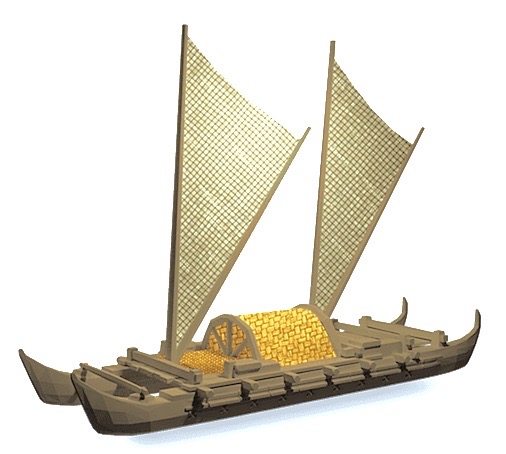
The South Island mōteatea Tūā Tūā tells how the Takitimu migratory waka conquered the storm waves of a cold front (a nor-westerly gale turning to a southerly) off the coast of South Westland. Each of its bow and stern posts acted as a high, long adze that chopped through storm waves. "Toki nui te toki, toki roa te toki." All the other voyaging waka that sailed up to Aotearoa would have had similar 'toki'. Question How could the upper end of a high bow withstand the mechanical forces of the waves without the latex gum and fibre stitching at its lower end breaking? I visited the Whanganui District Museum and discovered how the attached bows of its two old river canoes had been carved from another tree and attached to the carved hulls with loops of muka fibre. This complex mortice and tenon prow design is called a haumi kokomo. Haumi = an extension, Kokomo = thrust in. The sides of the carved hulls were cut further back than their keels, creating a interlocking join of 8 different flat surfaces, thus tripling the length of the wood to be joined and making the join much stronger when the bow was subjected to an upwards thrust at the bottom of rapids. Projecting the keel forward from the hull also protected the bindings of the prow when the craft was grounded. 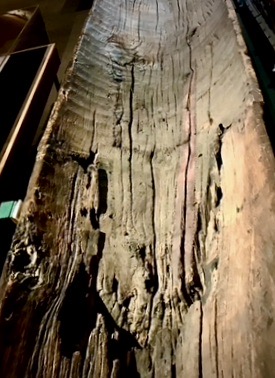
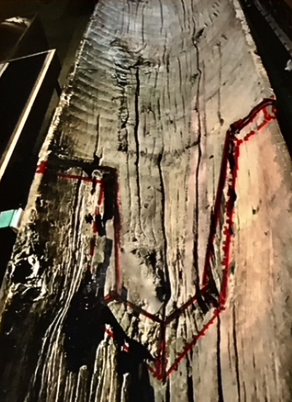 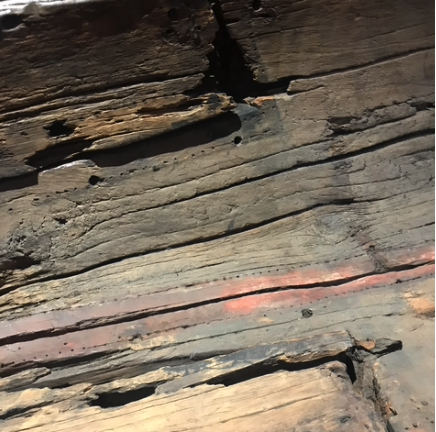

These show some of the holes drilled for the muka bindings, and where a tin strip had later been nailed to make a crack in the hull waterproof. 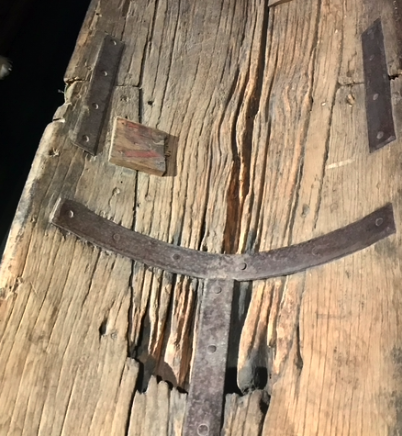 In this 1910-12 photo of a small Samoan paopao, built at Safune, Savai'i, the join between the hull and the prow can be seen clearly. Notice that no fibre bindings are used to hold the bow to the hull. The two parts are stuck together with latex from a breadfruit tree. Also notice the sophisticated wave-piercing bow, presumably used to minimize wave splash. 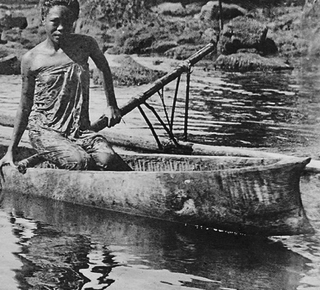
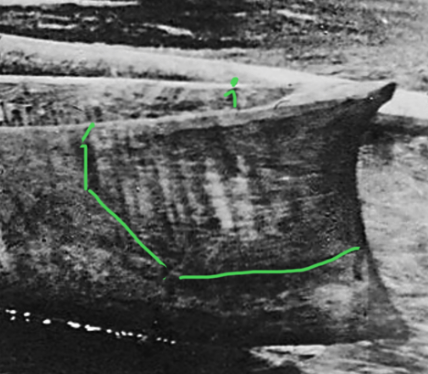  The
Mulifanua copra drier with the tree that was used
beside it. The breadfruit or ulu tree was often used
to carve canoes, but for this canoe, a fast-growing
introduced tamaligi tree (Moluccan albizia) was used. The
Mulifanua copra drier with the tree that was used
beside it. The breadfruit or ulu tree was often used
to carve canoes, but for this canoe, a fast-growing
introduced tamaligi tree (Moluccan albizia) was used.
 The branch of the tree
that was felled for the paopao.
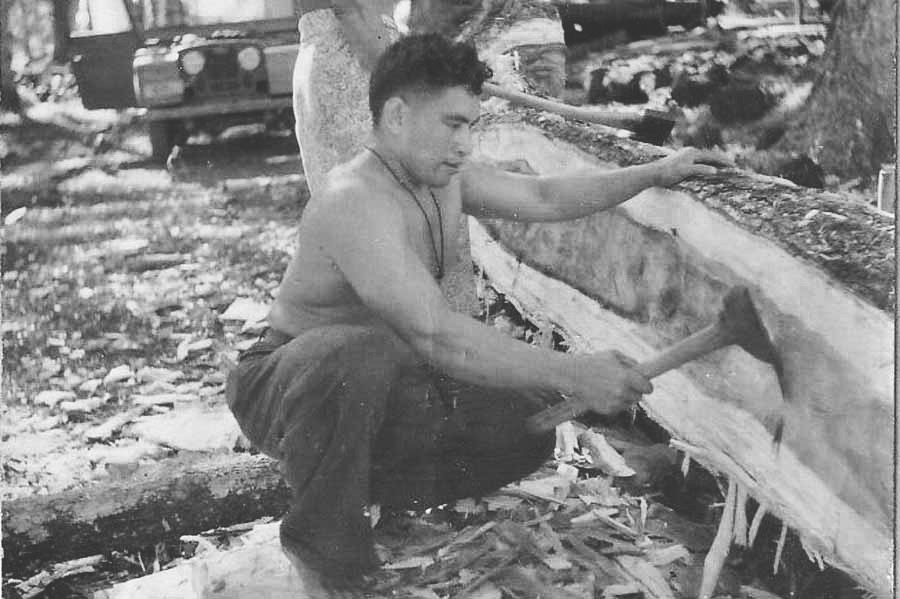 David Tippett says he once saw a canoe craftsman from Vanuatu adzing a hull in Grey Lynn, Auckland. After after the craftsman had shaped the outer form and was hollowing the inside out, he wanted the hull thickness to be about 20mm thick. As he got towards the 20mm thickness, he was listening for the right tone of each blow of the adze which would indicate how close he was to achieving the desired thickness.  A steel-bladed adze.
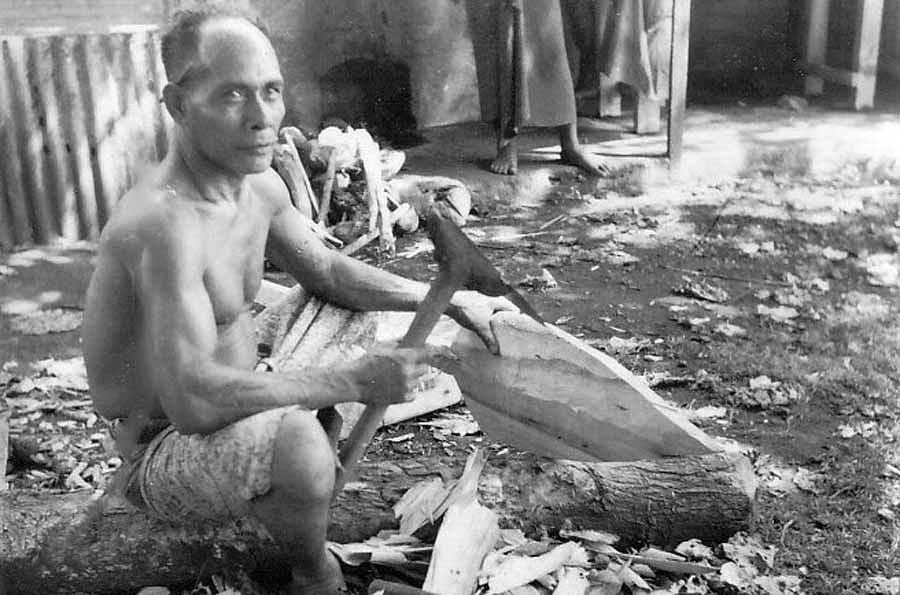 Falili, the lead carver
(tufuga fau va’a) using that adze to carve the paddle
(foe) of the paopao.
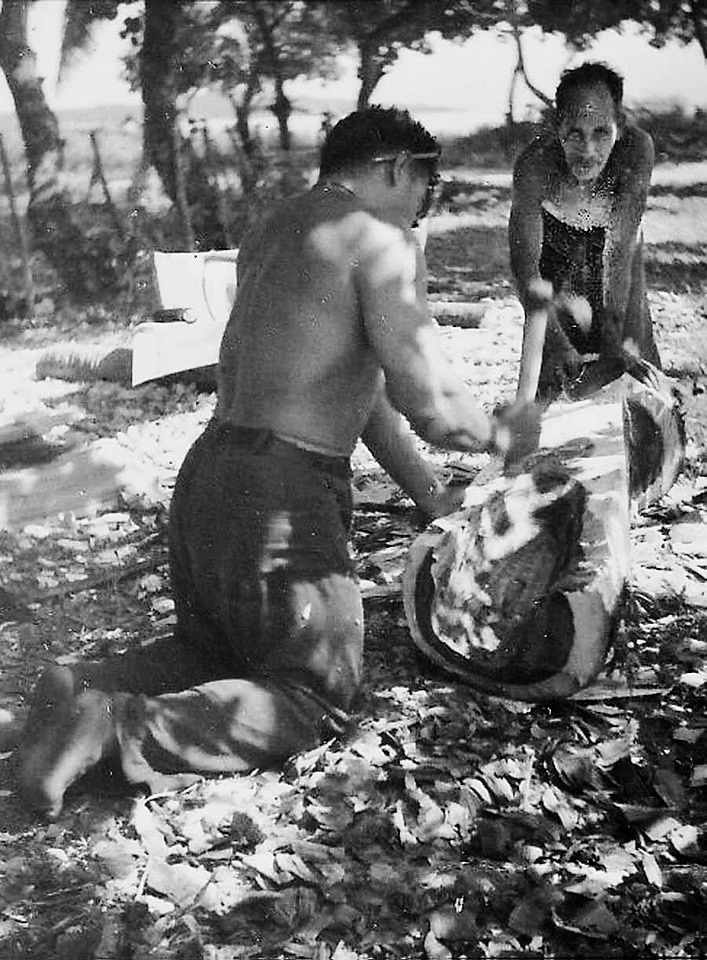 Working on the prow or
stern insert.
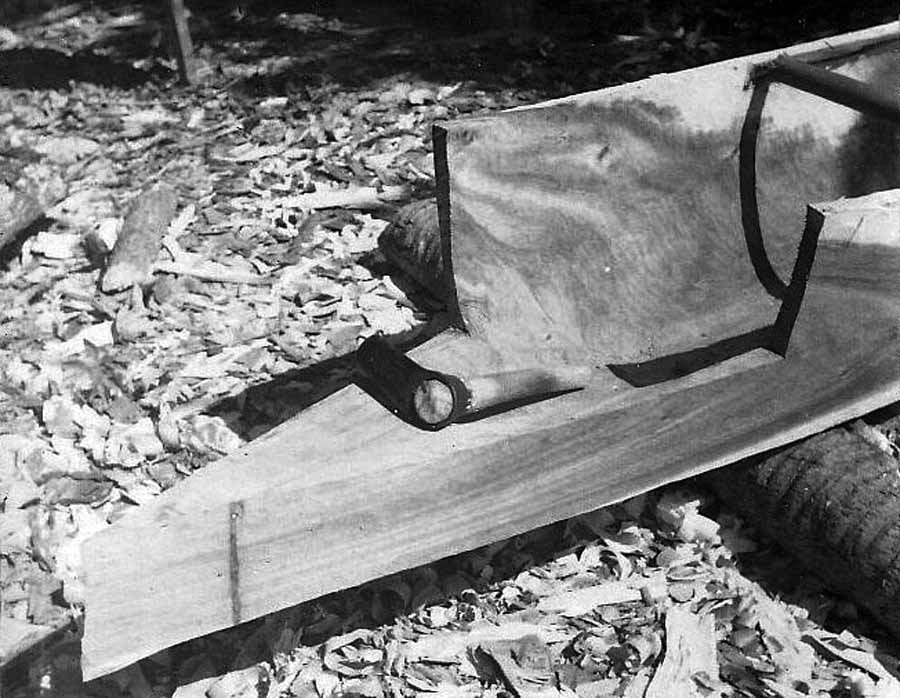 An adze lies on the keel in
front of the asymmetric notching of the va’a prow to
take
the carved bow insert. There similar asymmetric notching on the river waka in the Whanganui museum and also on this prow of a waka from the Mokau coast, so perhaps it is a design feature passed down from old times.
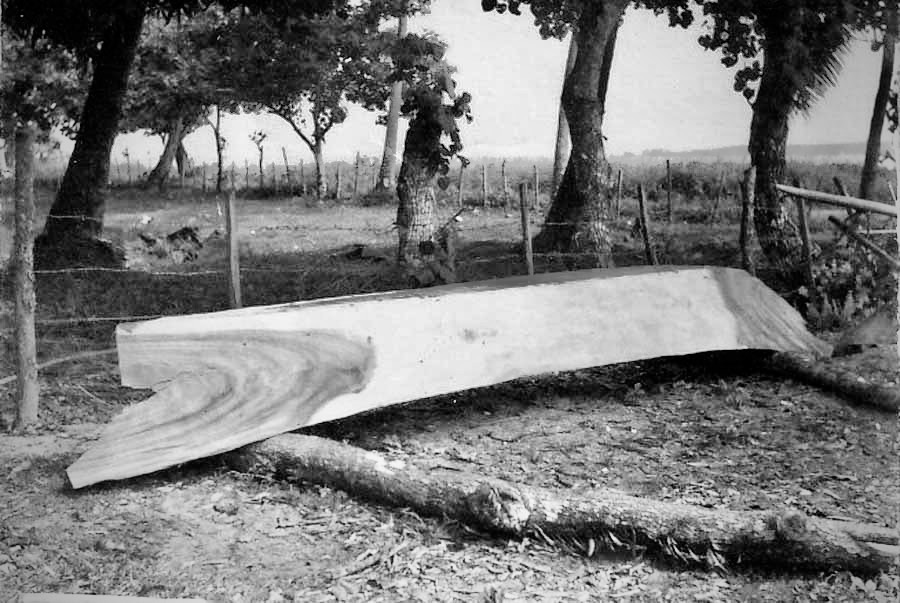 The raw stern and bow
inserts have been added before finishing off. The
perfect and almost invisible fit of the prow and stern
when the completed paopao was in the grand tradition of
Polynesian boat-building where joins as seen from the
outside of canoes were hard to detect. Before the pieces
were joined, the latex gum from the fruit of the
breadfruit-tree was used to cement them close and
prevent leakage..
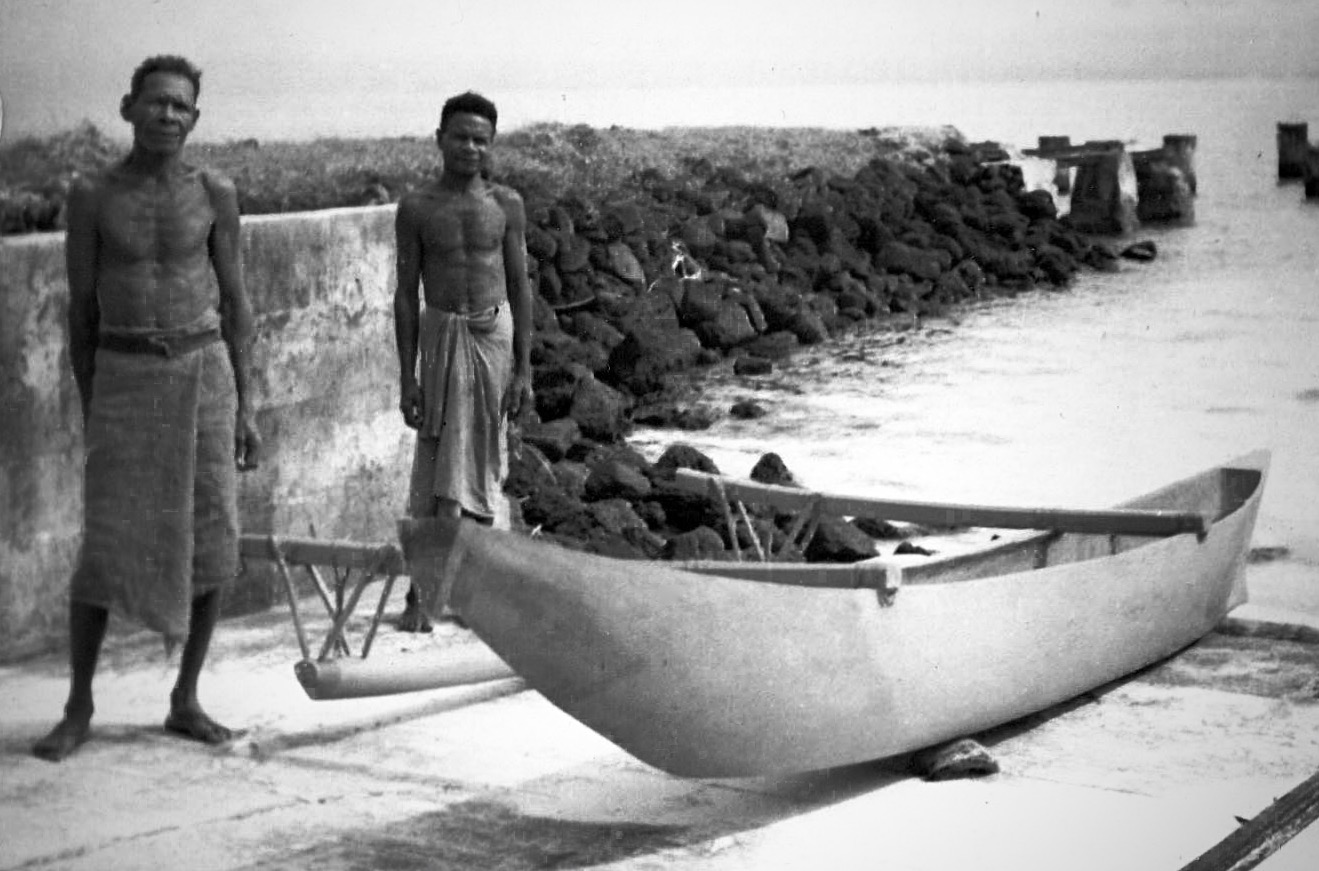
The finished paopao with
its outrigger, paddle and long bow insert (darker wood).
The bow extension was stuck in place with a latex gum
exuded from a breadfruit tree,
and then the hull sanded
smooth with a pumice-like type of coral.
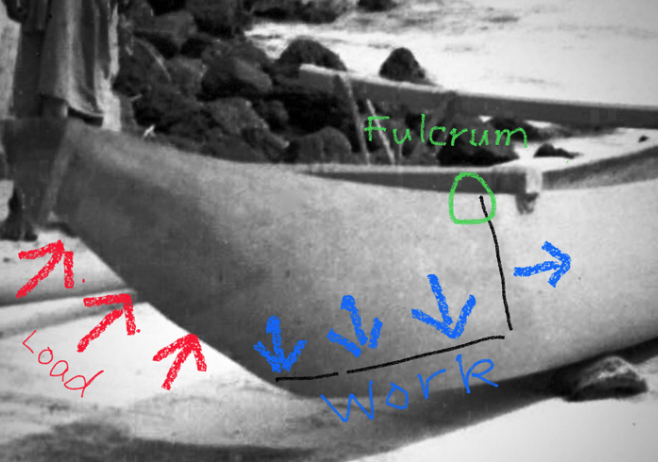 A high wave-slicer, a
long wave-slicer. The force of a wave on the high
bow is LESS than the adhesive force of the long
line of latex on the haumi kokomo joint holding the
two timbers together.
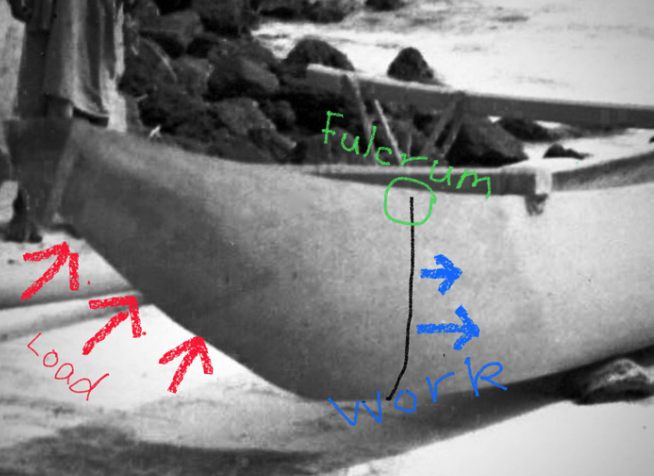 Toki nui, nui
poto?
Chat GTP told me "On ocean-going waka, plant latex extracted from the sap of a breadfruit or candlenut tree was heated and mixed with natural fibres such as coconut husk or hibiscus bark to create a strong, waterproof adhesive. This mixture was then applied to the seams between the planks, where it would harden like fiberglass and create a seal that prevented water from penetrating the hull." An inter-island Drua This 1905 photo
of a Fijian-style Drua,
taken at Samoa, shows the the much longer haumi kokomo needed on
an open water craft to withstand the forces of stronger waves.
Unfortunately, this watercraft, of a style and construction hundreds of years old, was not cared for by the colonial administrators from New Zealand, and by 1930, it had rotted away. 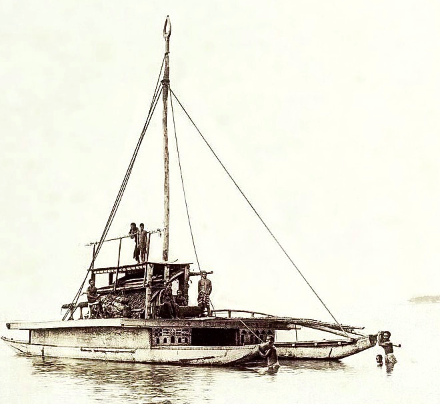 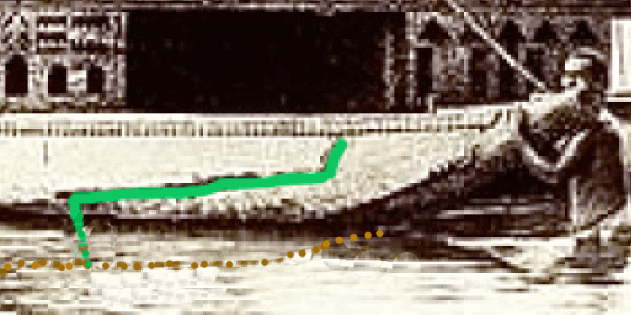 FURTHER QUESTIONS2.
How did the Polynesian master-carpenters manage to cut those
two complex shapes so that they fitted together so closely?
3. What gum did Maori use to seal any joints in waka like the ones at the Whanganui museum, and use to make the fibre stitching waterproof? 4. Have any waka with these complex joints for huami been adzed out in recent times? Please email me at [email protected]
Kiwi songs - Maori songs
- Home
Thanks to Tony Brunt of the Museum of Samoa for the historic pictures. Put onto folksong.org.nz website April 2023
|
